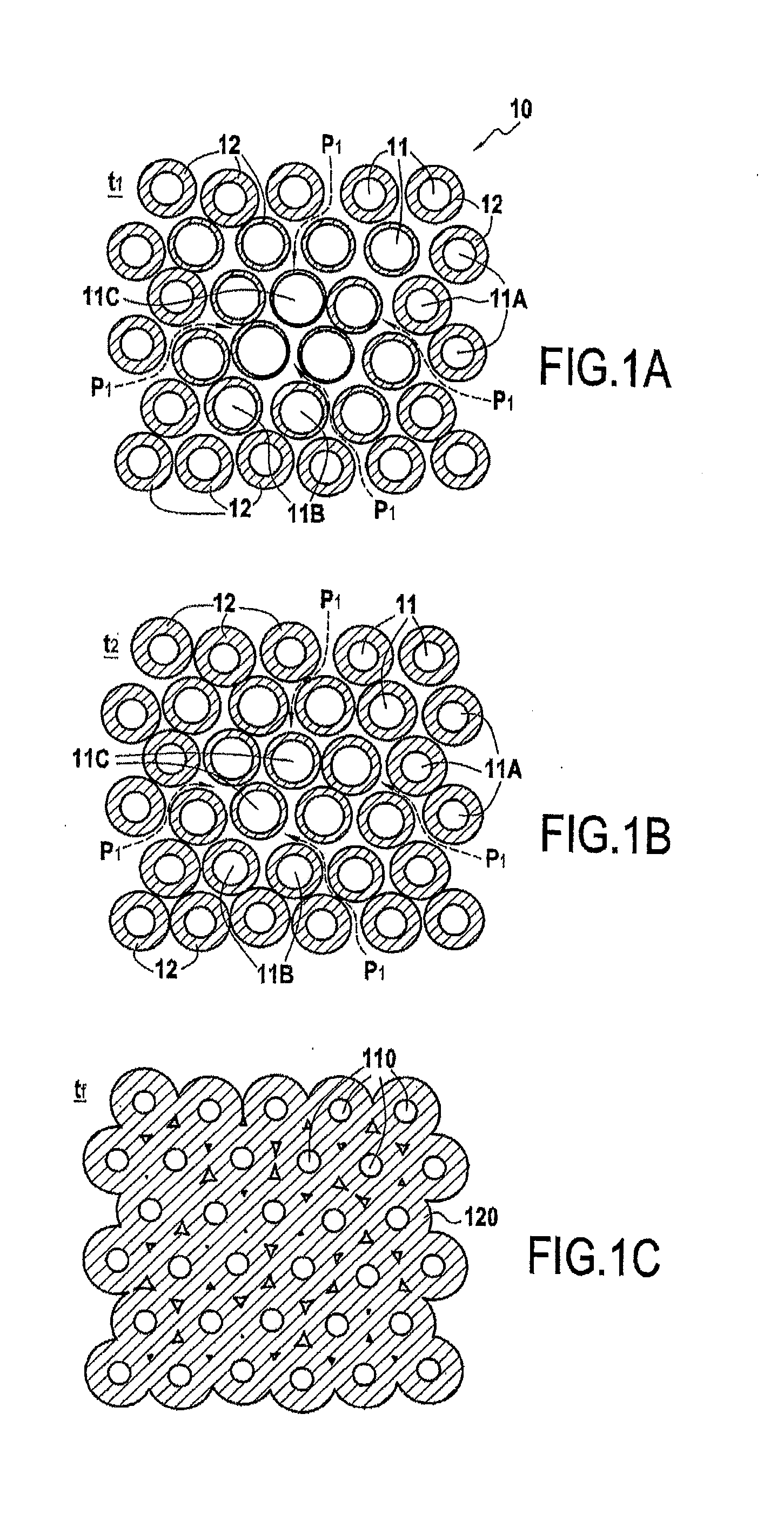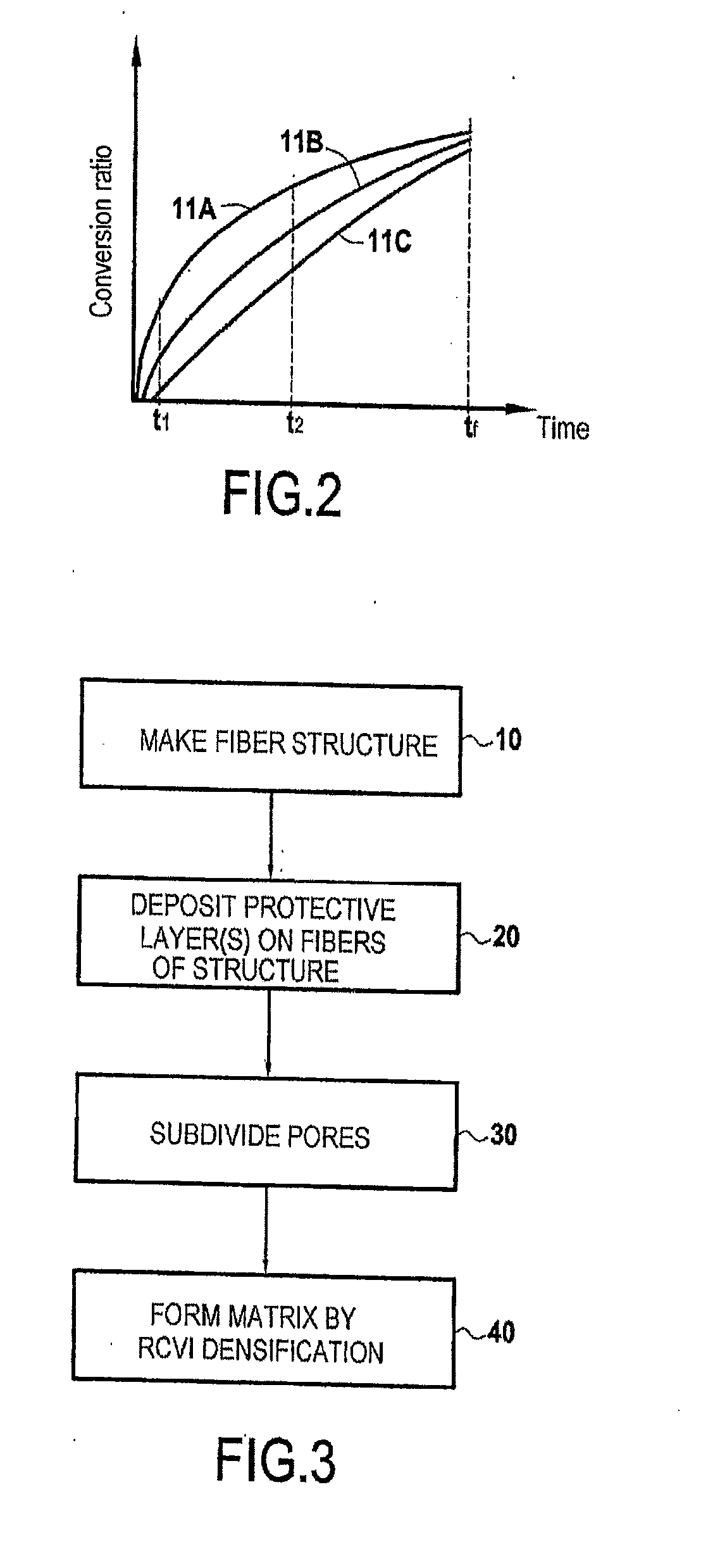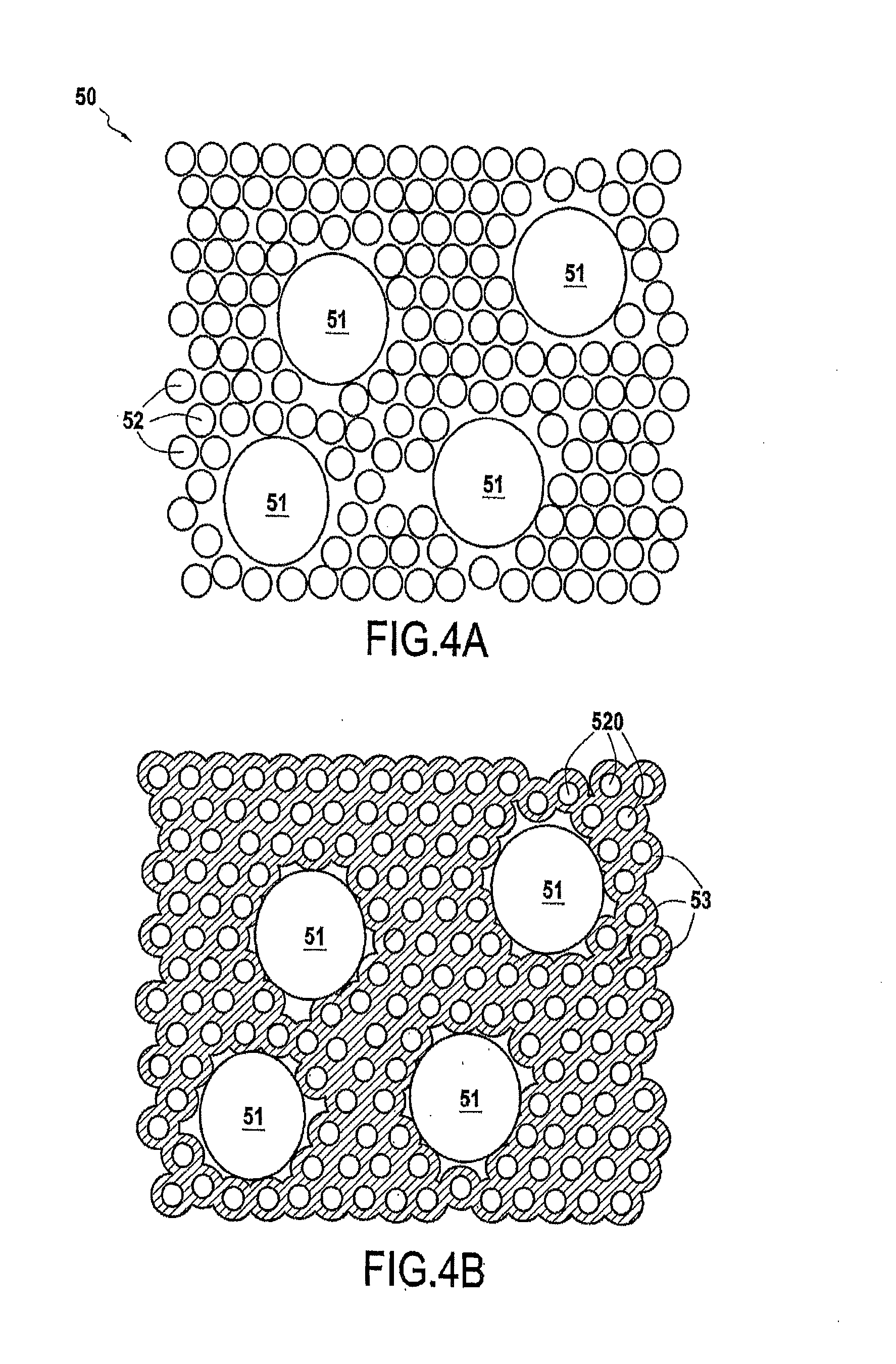Method for producing a composite material with a carbide matrix
a technology of carbide matrix and composite material, applied in the direction of coating, chemical vapor deposition coating, special surfaces, etc., to achieve good and uniform densification, accelerate densification
- Summary
- Abstract
- Description
- Claims
- Application Information
AI Technical Summary
Benefits of technology
Problems solved by technology
Method used
Image
Examples
Embodiment Construction
[0030]The present invention proposes a method of densifying a porous substrate with a carbide matrix obtained by reactive chemical vapor infiltration (RCVI) performed using a reactive gas composition having no carbon and suitable for reacting with carbon that is present in the substrate in order to form one or more carbides.
[0031]FIGS. 1A to 1C show how RCVI densification progresses in a porous substrate 10 constituted by a powder of carbon grains 11 of submicrometer size, i.e. of size less than one micrometer, or of micrometer size, i.e. of size greater than or equal to one micrometer. The powder is infiltrated with a reactive gas phase P1 suitable for forming at least one carbide by reaction between the carbon of the grains 11 and the gas phase P1. In the presently-described example, the reactive gas phase is constituted by TiCl4 that, on contact with grains of carbon, serves to form a titanium carbide (TiC) matrix. The carbide layer grows locally around each carbon-containing gra...
PUM
| Property | Measurement | Unit |
|---|---|---|
| Pressure | aaaaa | aaaaa |
| Structure | aaaaa | aaaaa |
Abstract
Description
Claims
Application Information
 Login to View More
Login to View More - R&D
- Intellectual Property
- Life Sciences
- Materials
- Tech Scout
- Unparalleled Data Quality
- Higher Quality Content
- 60% Fewer Hallucinations
Browse by: Latest US Patents, China's latest patents, Technical Efficacy Thesaurus, Application Domain, Technology Topic, Popular Technical Reports.
© 2025 PatSnap. All rights reserved.Legal|Privacy policy|Modern Slavery Act Transparency Statement|Sitemap|About US| Contact US: help@patsnap.com



